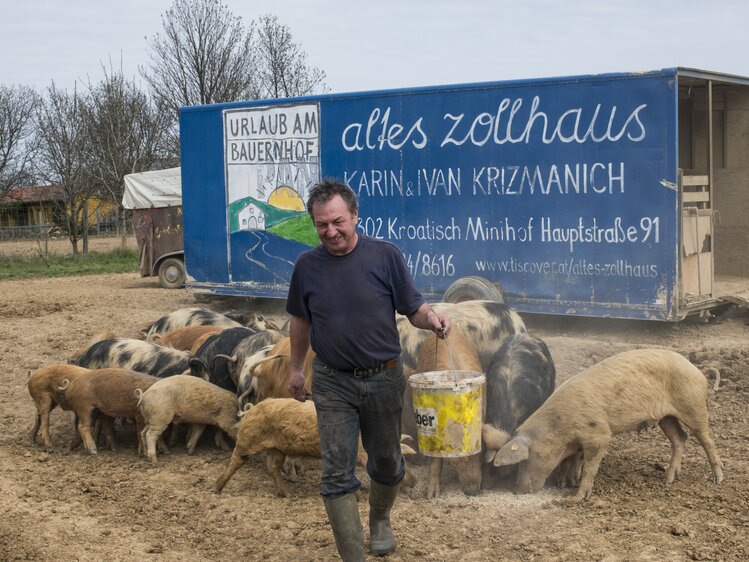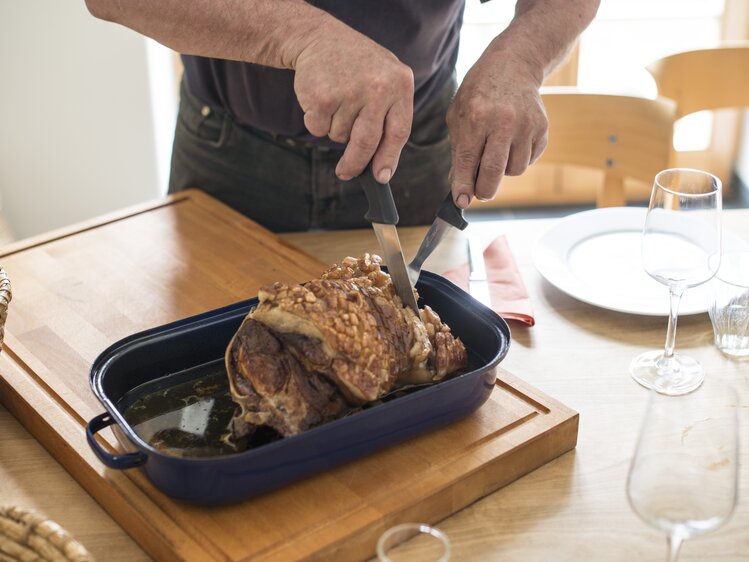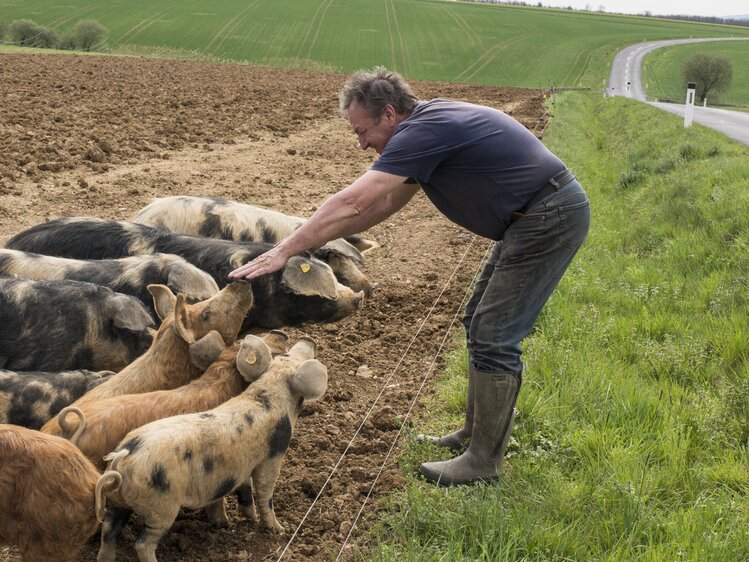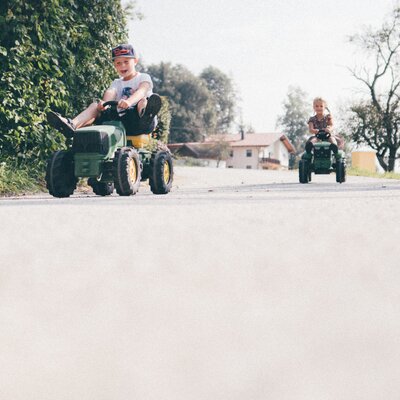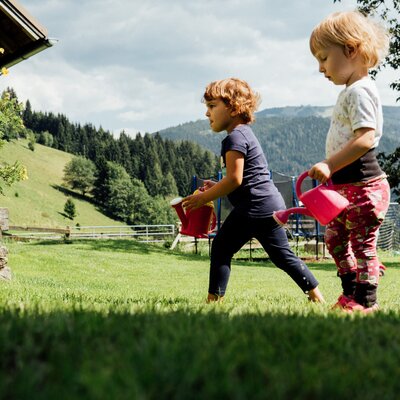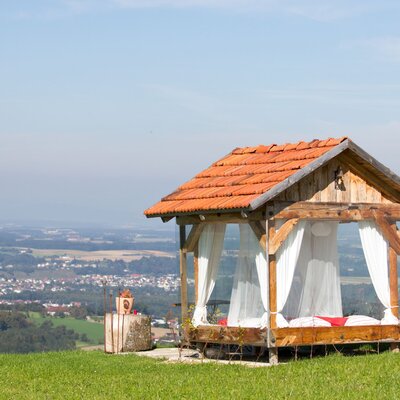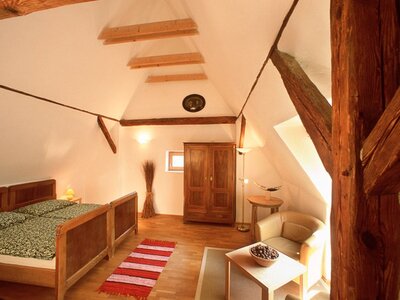
Farmhouse Meets History
Home is where you feel comfortable. For a while, it can also be somewhere else, outside of your own four walls. Families particularly appreciate the convivial atmosphere at the old customs house or “Altes Zollhaus”, as it’s called in German. As soon as you meet Karin and Ivan, the hosts, you’ll know why. They both spread a genuine kindness that has become rare these days. And they manage to take you to their nature-oriented world in almost an instant.
From 1938 onwards, customs officers lived here. In 1997, the Krizmanich family renovated the building and gave it a new lease of life. This new lease of life has a very special scent. One that wafts towards you straight from Karin’s kitchen. That’s where she makes her famous dandelion coffee. The dandelions she uses come from the meadows around the little village in sunny Central Burgenland. For her, it’s not only an ingredient for coffee but also for dandelion wine and various dishes.
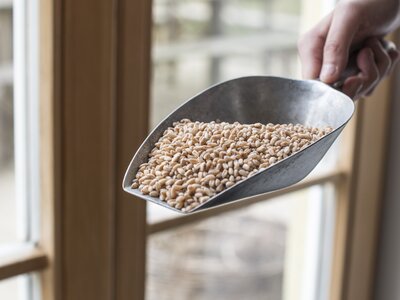
Far from Trite: Emmer and Einkorn
Quite the opposite! Once you’ve tried the emmer and einkorn rice made by the Krizmanich family, you’ll certainly understand why these traditional grains are currently making a comeback. I have to admit, I don’t have much experience with them myself. However, since my visit to the old customs house, I can’t do without them anymore. A few years ago, Ivan and Karin decided to reintroduce these old grain varieties to their fields, much to the delight of many of their guests. Emmer and einkorn are somewhat more laborious to process than other well-known sorts of grains. The grain must be removed from its protective husk first. Emmer flour is somewhat stickier than conventional wheat flour, darker in colour, but has an unmistakeable, spicy aroma. Einkorn has a slightly nutty flavour and contains a particularly high proportion of amino acids. So, it’s a grain with hidden powers.
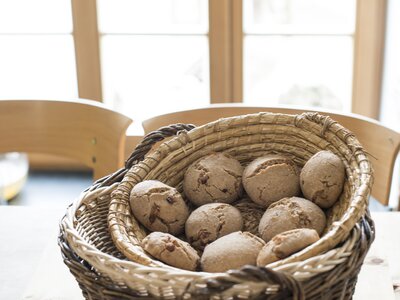
Early in the morning, when I arrive at my holiday destination “Altes Zollhaus”, Karin is already hard at work in the kitchen. The dough for Karin’s amazing bread made with emmer flour is currently rising. Meanwhile, she’s cleaning the freshly picked dandelion roots for her famous dandelion coffee. Karin grounds the flour used to make bread herself in her wooden mill. Then, she processes it straight away. I arrive just in time to slice the ham which will then be mixed into the dough. The Krizmanich family also makes ham themselves. Ivan even built a smoking room a few years ago. Since then, customers from all over have frequently made the way to the old customs house. They can’t wait to get their hands on the ham from Turopolje and Duroc pigs. This ham is also perfect in the bread made with emmer flour. It adds the finishing touch. Together, we form small loaves and pop them into the oven. Minutes later, we can already taste the fresh, warm bread with a glass of quince juice.
Happy as a Pig in Muck
The Turopolje and Duroc pigs on the Krizmanich family’s farm are happy as pigs in muck can be. They are lucky enough to move to a new meadows, fields or even vineyards every few months. Starting from November, the free-range pigs can dig around the vineyard during the winter months. It allows them to get rid of pests and fertilise the soil with their droppings. The Krizmanich family’s Blue Frankish grapes are particularly grateful for that. This way, they can build enough strength to thrive in spring and to produce a high yield that’s harvested in autumn.
After the delicious breakfast, we get to the key item on the menu: roasted pork loin from the Turopolje pig (“Karreebraten”). It goes without saying that the meat is sourced from their own free-range pigs. The Krizmanich family, and especially Ivan, takes loving care of them. If you approach them on the pasture, they’ll trot right up to you, hoping for a nice little stroke and something to eat. At feeding time, it all kicks off. Even the pigs who are standing at the other end of the field will be in position within seconds. None of them lets Ivan out of sight for even a moment. Only when they are all sated, their favourite human can move along. Com-pared to conventional pigs, the Krizmanich family’s free-range pigs need more time to grow. It’s worth the wait! The meat from Turopolje and Duroc pigs is of excellent quality, perfect for making ham or bacon. We’ll soon be able to get a taste of it ourselves. The pork loin is al-ready roasting in the oven.

A Pick-Me-Up: Dandelion Coffee
As a digestif, Karin serves us her famous dandelion coffee, which we have been eagerly anticipating. It looks just like normal coffee but in taste, it’s a little more on the bitter side. This coffee surrogate was very popular during World War II and the post-war period. Unfortunately, it fell into oblivion soon after. Making dandelion coffee isn’t difficult. The dandelion roots are dried, ground and prepared like normal coffee. The only thing that’s missing is caffeine. But to make up for that, dandelion coffee boosts your immune system and is beneficial for the gall bladder and liver.
How to prepare dandelion coffee:
Dig up the dandelion roots, cut off the leaves and wash the roots thoroughly. With a wire brush, carefully strip off the fine root hairs and cut the roots into pieces. Place them on a baking tray and dry them in the oven for 30-40 minutes at 180 °C until they start to steam. Grind the pieces of dried root with a coffee grinder and boil them with water. Leave the mixture to soak for a while. Then, strain it using a tea strainer or coffee filter. Enjoy hot or store in the fridge for up to several days.
What an experience! Many thanks to Karin and Ivan for your time. Thank you for giving us the chance to join you at your day-to-day work, for allowing us to look behind the scenes in Karin’s homey kitchen. I was delighted by the high-quality locally grown produce that you make yourselves, on your farm. And I was amazed how passionately you’re following your calling.

